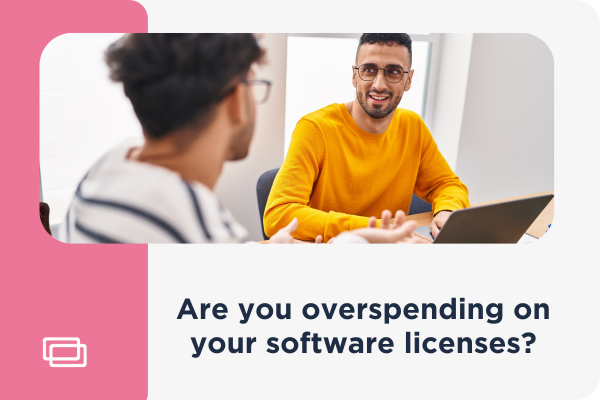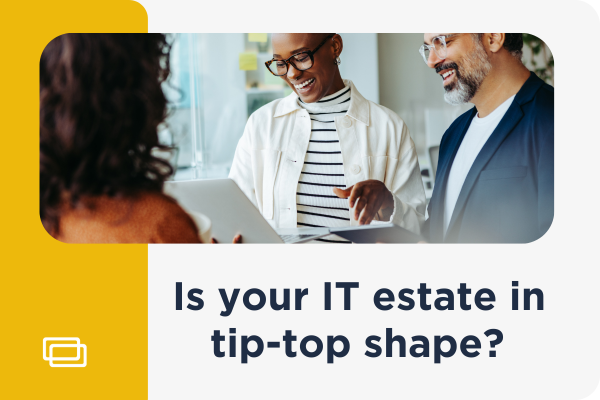How to develop a foolproof risk mitigation strategy
25th July 2024
Michaela Gray
Blog,
Oftentimes, risks are inevitable. With threats to your data, finances, and business operations, a comprehensive risk mitigation strategy is essential.

What is risk mitigation and why is it so important?
Risk mitigation is the practise of putting plans in place to reduce the impact of threats to your organisation. The ultimate goal is to reduce risk exposure and lessen the time and resource needed to recover if an incident were to occur, while ensuring your organisation continues moving forward with confidence.
Unfortunately, many organisations overlook the importance of implementing a risk mitigation strategy, which leaves them exposed to threats and unable to recover efficiently in the case of disaster. In fact, 41% of organisations reported that they experienced three or more critical events in the last year, highlighting the need for strategies to help mitigate the risk associated with these threats.
By taking the time to build a continuity plan, either internally or by utilising risk management solutions, you will have peace of mind that your assets, people, and business processes are protected in the event of an incident.
Threats can come in many forms, so it’s vital to understand each type of threat and what you need to do to mitigate it.
- Cyber security: increasingly prevalent as organisations modernise, cyber security threats encompass the risks that affect the confidentiality of your assets. These types of threats can impact several areas of your organisation, so it’s vital to have a plan in place for if this type of incident were to occur
- Compliance: this type of incident occurs when an organisation unknowingly violates external rules, guidance, and regulation, jeopardising its reputation
- Operational: this risk is associated with threats to your everyday operations and activities. For example, human error, system failures, and more
- Environmental: risks surrounding unanticipated changes like weather, natural disasters, and external factors like traffic and employee illness
- Financial: any threat surrounding investments, paying, and receiving money
Due to the amount of risks you could face, your risk mitigation strategy should be incredibly detailed and thought-out, taking any potential incident into account.
IT and SAM news delivered straight to you
How to develop a risk mitigation strategy
At the highest level, risk mitigation involves a team of people, processes, and technology that helps an organisation assess its risks and then develop a comprehensive plan for reducing those risks. A risk mitigation strategy isn’t a one-size-fits-all, or something you can copy a template of. It should be completely unique to your organisation, but there are steps you can follow to ensure your strategy is as comprehensive as possible. Additionally, utilising risk management tools and risk management solutions is an easy way to make sure your strategy is as comprehensive as possible.
Identification
Begin building your risk mitigation strategy by identifying potential risks that could impact your project or broader business operations. Engage a diverse group of stakeholders to ensure comprehensive risk identification. Project documentation and lessons from similar endeavours can provide valuable insights.
Planning and strategy
Once you’ve identified potential risks to your organisation, you need to plan how your risk mitigation strategy will align with your business goals. Start by creating clear objectives, using a systematic approach to identify, assess, prioritise, and respond to potential risks. Involve and communicate with stakeholders, create a risk management team, utilise risk management tools, and provide training to ensure your plan is executed as specified.
Techniques
Research the risk mitigation techniques that are used by organisations like yours, using that research to determine the best approach to mitigating risks in a way that works for your organisation. The main risk mitigation techniques encompass:
- Spreading out risk
- Implementing redundancy and backup systems
- Developing contingency plans
Training
Once your strategy is in place, it’s important to educate your employees and build a culture of risk awareness. Hold regular training and give your employees reminders of the strategy and the vitality of following it, ensuring they understand their role and responsibilities in the event of an incident.
Monitoring
Many organisations make the mistake of creating a risk mitigation strategy and then forgetting about it. The most important step when creating a risk mitigation strategy is continuously monitoring risk indicators and updating when necessary. Implementing a risk management system is an easy way to ensure your risk management strategy is monitored properly. At the rate at which our world is developing, processes in your strategy are likely to change more often than you think.
Helping you with our risk management software
We have extensive experience in helping organisations like yours effectively develop, deploy, and maintain risk mitigation strategies. Our IT asset management API and risk management software will help you to effectively reduce compliance risks and optimise software usage. Our solutions bolster data protection systems, enabling quick responses to cyber security threats while mitigating the risk of licensing non-compliance.
SAM Essentials empowers cost savings and compliance through a robust SAM programme, equipping your team with the necessary skills for efficient software license management.
SAM Agile delivers actionable insights monthly, each tied to specific business values, facilitating precise tracking of risk mitigation opportunities across all completed tasks.
SAM Insights offers comprehensive risk understanding, guiding proactive actions to minimise or eliminate potential risks effectively. Together, these risk mitigation tools provide a comprehensive framework for proactive risk management and compliance enhancement in software asset management.
Contact us to find out moreStart maximizing your IT budget now
Arrange a free call with one of our specialists now to find out what changes your organization should be making to maximize your IT budget in 2023.

















